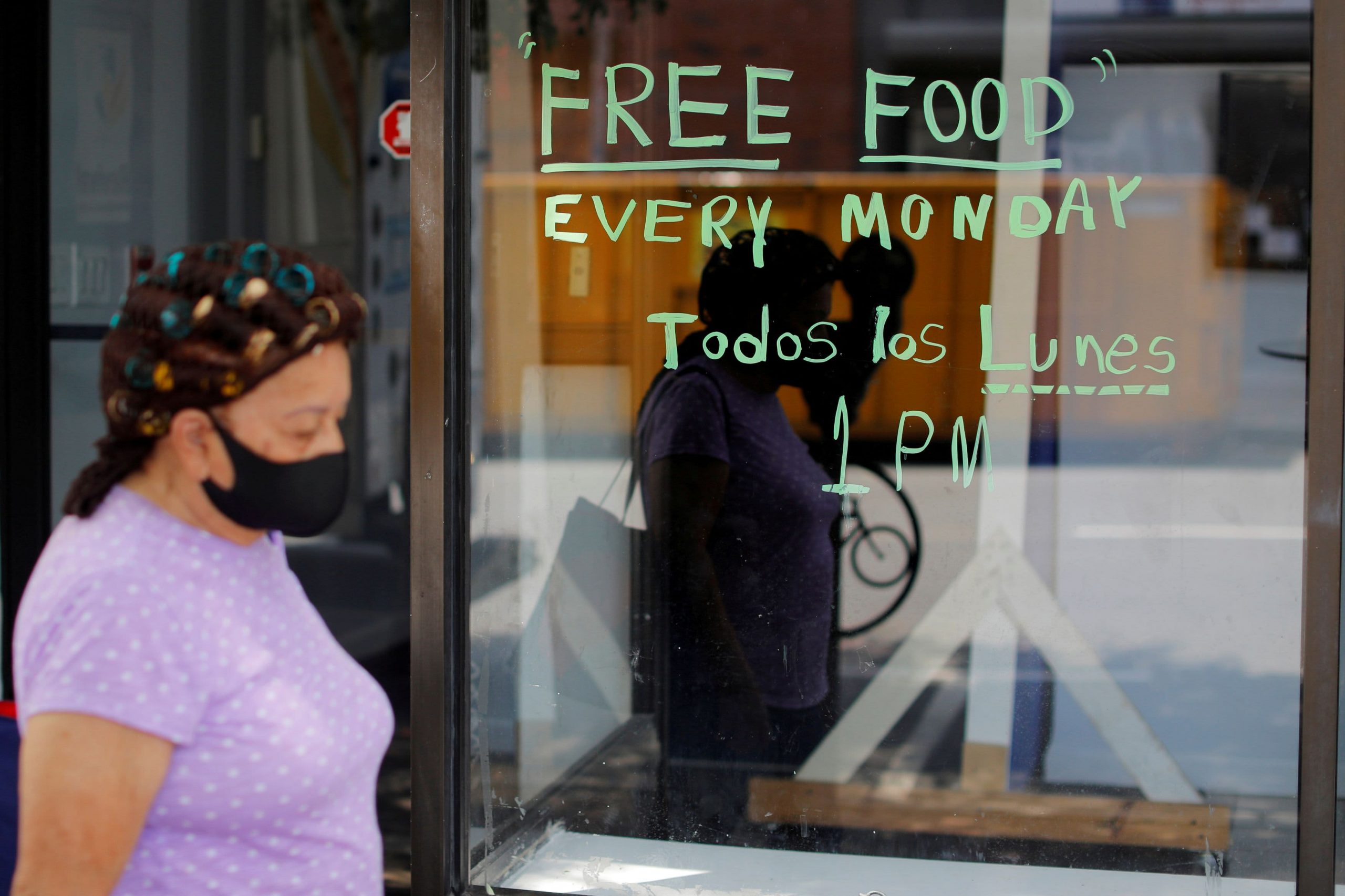
A pedestrian passes a notice for the Revival International Center (Centro Internacional de Avivamiento) food pantry, in a city hard hit by the coronavirus disease (COVID-19) outbreak, in Chelsea, Massachusetts, U.S., July 9, 2020.
Brian Snyder | Reuters
The recent Covid relief package offers 11 extra weeks of jobless benefits to workers. Many, but not all, will be eligible for four more, for a total of 15 weeks.
However, they won’t get a $300 weekly increase in benefits during that four-week period.
The $900 billion measure extended two temporary federal unemployment programs that support millions of Americans into 2021.
More from Personal Finance:
A top Democrat backs another $600 unemployment boost
Biden will extend payment pause for student loan borrowers
How $2,000 stimulus checks could be targeted
One, Pandemic Unemployment Assistance, issues benefits to the self-employed and others who don’t typically qualify for state aid. The other, Pandemic Emergency Unemployment Compensation, is available to those who exhausted standard state benefits, which generally last up to six months.
Both, created by the CARES Act, were slated to end the weekend after Christmas. Now, workers can get aid until March 13 or 14. (The exact end date depends on states’ respective administrative calendars.)
Phaseout period
However, many people can receive assistance for another month during a “phaseout period” that ends April 10 or 11. (Again, that will vary by state.)
Eligibility for those extra payments will depend on how long workers have been getting benefits.
The relief law allows PUA and PEUC recipients to tap aid for up to 50 weeks. Workers who began collecting benefits early in the pandemic will hit that mark by the middle of March.
Workers who don’t hit the 50-week threshold by March 14 will be eligible for benefits until they do, up to April 11.
Notably, the federal government won’t pay a $300 weekly enhancement to those individuals. That supplement is only available until March 14.


 Signal2forex.com - Best Forex robots and signals
Signal2forex.com - Best Forex robots and signals




